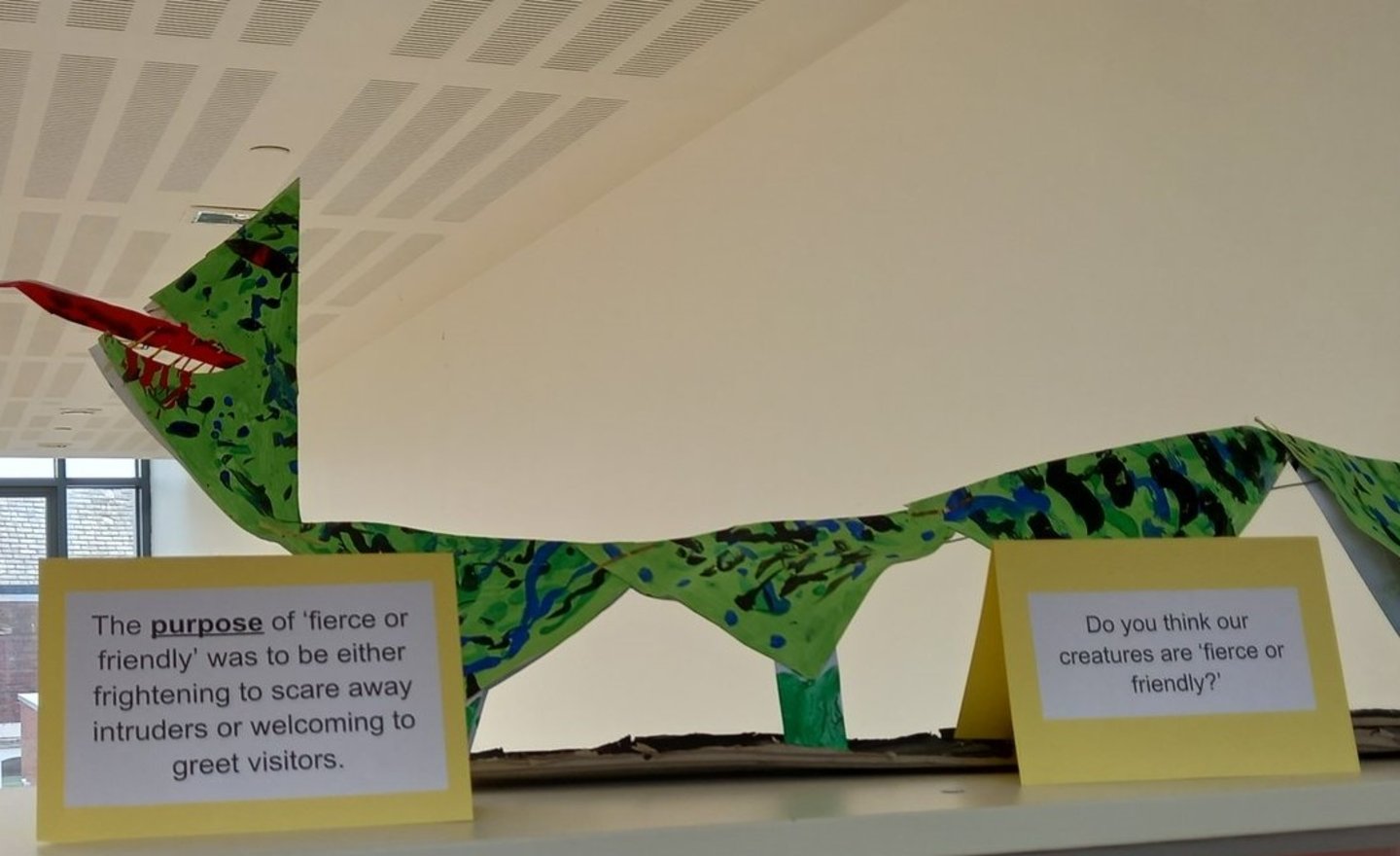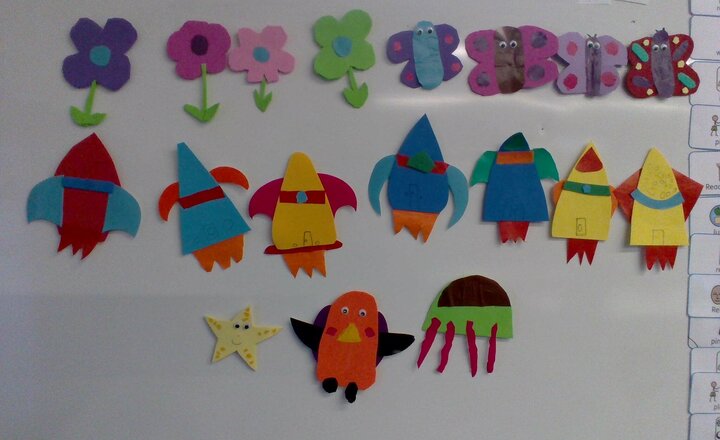Why do we teach Design and Technology?
At St Silas Academy, we value Design and Technology as an important part of the children’s entitlement to a broad and balanced curriculum. Design and Technology is taught through a variety of creative and practical activities, pupils are taught the knowledge, understanding, skills and vocabulary needed to engage in a continuous process of designing and making. We follow the ‘Design, Make, Evaluate’ approach to the teaching of DT, as outlined in the National Curriculum Programmes of Study document. We engage our children through activities which involve investigating and evaluating existing products, focussed tasks in which children develop particular aspects of knowledge and skills and then designing and making in which the children design and make ‘something’ for ‘somebody’ for ‘some purpose’. We ensure that the teaching of Design and Technology at St. Silas supports the social development of our children through the way we expect them to learn with each other.
Design Technology prepares The children at St. Silas to deal with tomorrow’s ever-changing world. It encourages children to become independent, creative problem-solvers and thinkers as individuals and as part of a team - making positive changes to their quality of life. It assists children in developing a greater awareness and understanding of how everyday products are designed and made. Through the study of Design and Technology, the children will combine practical skills with an understanding of aesthetic, social and environmental issues, as well as functions and industrial practices. This allows them to reflect on and evaluate present and past design and technology, its uses and its impacts. Design and Technology helps all our children to become intelligent and informed future consumers and potential innovators.
Aims
The national curriculum for Design and Technology aims to ensure that all pupils:
- develop the creative, technical and practical expertise needed to perform everyday tasks confidently and to participate successfully in an increasingly technological world
- build and apply a repertoire of knowledge, understanding and skills in order to design and make high-quality prototypes and products for a wide range of users
- critique, evaluate and test their ideas and products and the work of others
- understand and apply the principles of nutrition and learn how to cook.
British Values
Collaborative work in Design and Technology develops mutual respect for contrasting opinions, beliefs and abilities of others. Additionally, children develop a respect for the environment, their own health and safety and that of their peers and teachers. They learn to appreciate the value of comparing and contrasting and learn to show resilience. A variety of experiences teaches them to appreciate that all people – and their views – are equally important. The children at St. Silas are encouraged to work in a democratic way, implementing the ‘give and take’ required for successful teamwork.
How do we teach D.T?
The teaching and implementation of the Design and Technology Curriculum at St Silas is based on the National Curriculum which provides a well-structured approach to this subject. It will be primarily linked to other foundation subjects wherever possible across both Key Stages which is in line with our cross curricular approach. Design and Technology skills are built upon each year as children progress through the school. Each year group commits to designing, making and evaluating one D&T product every half term. In terms of cooking and nutrition, year groups have access to the onsite kitchen on a timetabled basis to prepare and make basic dishes using a range of techniques.
What do we teach?
Key stage 1
Through a variety of creative and practical activities, pupils should be taught the knowledge, understanding and skills needed to engage in an iterative process of designing and making. They should work in a range of relevant contexts.
When designing and making, pupils should be taught to:
Design
- design purposeful, functional, appealing products for themselves and other users based on design criteria
- generate, develop, model and communicate their ideas through talking, drawing, templates, mock-ups and, where appropriate, information and communication technology
Make
- select from and use a range of tools and equipment to perform practical tasks [for example, cutting, shaping, joining and finishing]
- select from and use a wide range of materials and components, including construction materials, textiles and ingredients, according to their characteristics
Evaluate
- explore and evaluate a range of existing products
- evaluate their ideas and products against design criteria
Technical knowledge
- build structures, exploring how they can be made stronger, stiffer and more stable
- explore and use mechanisms [for example, levers, sliders, wheels and axles], in their products.
Key stage 2
Through a variety of creative and practical activities, pupils should be taught the knowledge, understanding and skills needed to engage in an iterative process of designing and making. They should work in a range of relevant contexts
When designing and making, pupils should be taught to:
Design
- use research and develop design criteria to inform the design of innovative, functional, appealing products that are fit for purpose, aimed at particular individuals or groups
- generate, develop, model and communicate their ideas through discussion, annotated sketches, cross-sectional and exploded diagrams, prototypes, pattern pieces and computer-aided design
Make
- select from and use a wider range of tools and equipment to perform practical tasks [for example, cutting, shaping, joining and finishing], accurately
- select from and use a wider range of materials and components, including construction materials, textiles and ingredients, according to their functional properties and aesthetic qualities
Evaluate
- investigate and analyse a range of existing products
- evaluate their ideas and products against their own design criteria and consider the views of others to improve their work
- understand how key events and individuals in design and technology have helped shape the world
Technical knowledge
- apply their understanding of how to strengthen, stiffen and reinforce more complex structures
- understand and use mechanical systems in their products [for example, gears, pulleys, cams, levers and linkages]
- understand and use electrical systems in their products [for example, series circuits incorporating switches, bulbs, buzzers and motors]
- apply their understanding of computing to program, monitor and control their products.
Cooking and nutrition
As part of their work with food, pupils should be taught how to cook and apply the principles of nutrition and healthy eating. Instilling a love of cooking in pupils will also open a door to one of the great expressions of human creativity. Learning how to cook is a crucial life skill that enables pupils to feed themselves and others affordably and well, now and in later life.
Pupils should be taught to:
Key stage 1
- use the basic principles of a healthy and varied diet to prepare dishes understand where food comes from.
Key stage 2
- understand and apply the principles of a healthy and varied diet
- prepare and cook a variety of predominantly savoury dishes using a range of cooking techniques
- understand seasonality, and know where and how a variety of ingredients are grown, reared, caught and processed.
Design and Technology policy
Design Technology Curriculum Overview
Assessment
Due to the practical nature of Design and Technology, evidence of work completed by children can be in the form of teacher’s notes or as a photographic record. Teachers assess children’s knowledge, understanding and skills in Design and Technology by making observations of the children working during lessons. As part of our assessment for the learning process (and in line with our school’s assessment policy), children will receive both verbal and written feedback in order to aid progression in the subject.
Children are also encouraged to be critical of their own work, editing previous work and highlighting their own next steps to make improvements. The assessment is used to inform differentiation, support and challenge required by the children. It allows us to track which children are meeting expectations and which are exceeding expectations as well as those who may be achieving below expected.
Message from the Subject Leader
I have always enjoyed STEM subjects and passionately believe that in D.T. children can enjoy using and consolidating their skills from science and maths to design and make products.
Miss Greenwood
Support for Parents
Why not try a DT activity at home?
Below are some activities you could try at home...
KS1 Design and Technology - England
KS2 Design and Technology
Engineering@Home
Ideas for days out with the children:
- LEGOLAND Discovery Centre
- Eureka! The National Children's Museum
- Manchester’s Museum of Science & Industry
- Recycling Discovery Centre at Gillmoss
- Cadbury World Birmingham
Related News
Related Blog Posts

Dragons Alive
A great time was had by everyone designing our fierce or friendly dragons.
- We had to fold some card to make squares which were used for the body of the dragon.
- Then we decorated the body of the dragon.
- Then we joined the paper together to make the body of the dragon using wire and paper…




.jpg)